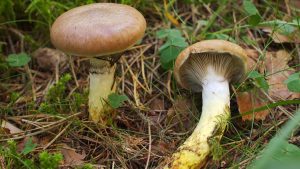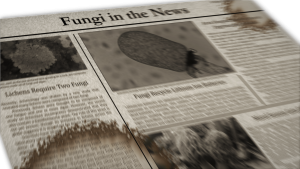#127: Ophidiomyces ophiodiicola, causal agent of Snake Fungal Disease
Snakes of the Eastern United States are dying of a disease called Snake Fungal Disease (SFD). Recently, the cause of SFD was identified as the fungus Ophidiomyces ophiodiicola. This fungus normally contributes to the decomposition of dead animals, but has for some reason been infecting live snakes since the early 2000’ SFD is primarily characterized by a severe rash on the snake’s skin, although it may also affect the snake’s eyes or even liver. The infection often results in death and in some species the mortality rate appears to be 100%.







![#011: Characteristics of Kingdom Fungi [Archived]](https://www.fungusfactfriday.com/wp-content/themes/hueman/assets/front/img/thumb-small-empty.png)


